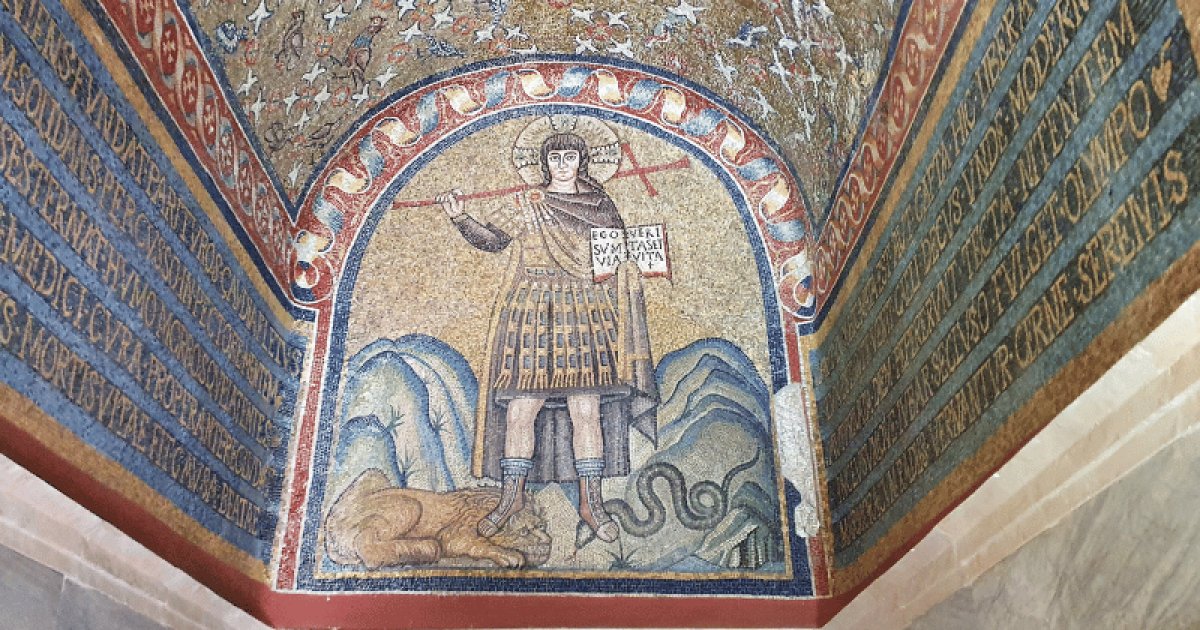ARCHIEPISCOPAL MUSEUM AND CHAPEL OF ST. ANDREW, St. Andrew's Chapel
 Language: English / USA
Language: English / USA
The Archbishop's Chapel found on the second floor of the Palace is dedicated to St. Andrew. It was built at the behest of Bishop Peter II around 500 A.D., at the time when Ravenna had fallen to Theodoric's Ostrogoths.
The reason for its construction is curious: this Orthodox Catholic building was in fact intended as a protest against the predominant cult at that time, Arianism.
The chapel consists of two small rooms: an entrance hall and the chapel proper with its small but wonderful apse.
As you enter the entrance hall, you immediately notice the marbles lining the lower part of the walls, then your gaze ascends to the vault with a triumph of golden tiles that serve as a backdrop to a rich decoration of white lilies and birds of various species that recall the image of the Earthly Paradise.
If you turn toward the entrance, immediately above, you find an unusual image of Christ the Warrior, a true declaration of war on Arianism: Christ, dressed as a soldier, crushes the head of a snake, a symbol of sin, and a lion representing heresy. Along the walls, gold lettering on a blue background enhances the importance of the mosaic, with the words: "whether the light was born here or imprisoned here, it reigns free."
Now press pause until you reach the main room.
The central part of the ceiling is dominated by a gold background mosaic with a central shield bearing the monogram of Christ, consisting of the Greek letters "Iota" and "Chi" crossed with each other. The shield enclosing it is supported by the four archangels, interspersed with the symbolic images of the four evangelists: the eagle of St. John, the bull of St. Luke, the lion of St. Mark, and the angel of St. Matthew. The four figures hold up the volumes of the gospels.
The semi-dome of the apse is adorned with a blue background starry vault with a large golden cross.
In several places you can see portraits of saints, both men and women, the latter with large eyes, their heads covered by a veil, and wearing all types of jewelry.
Let me leave you with an interesting fact: you should know that the golden mosaic tiles were made by incorporating a real thin sheet of gold in the glass paste. That's why these mosaics are still so resplendent after more than 1,500 years!



